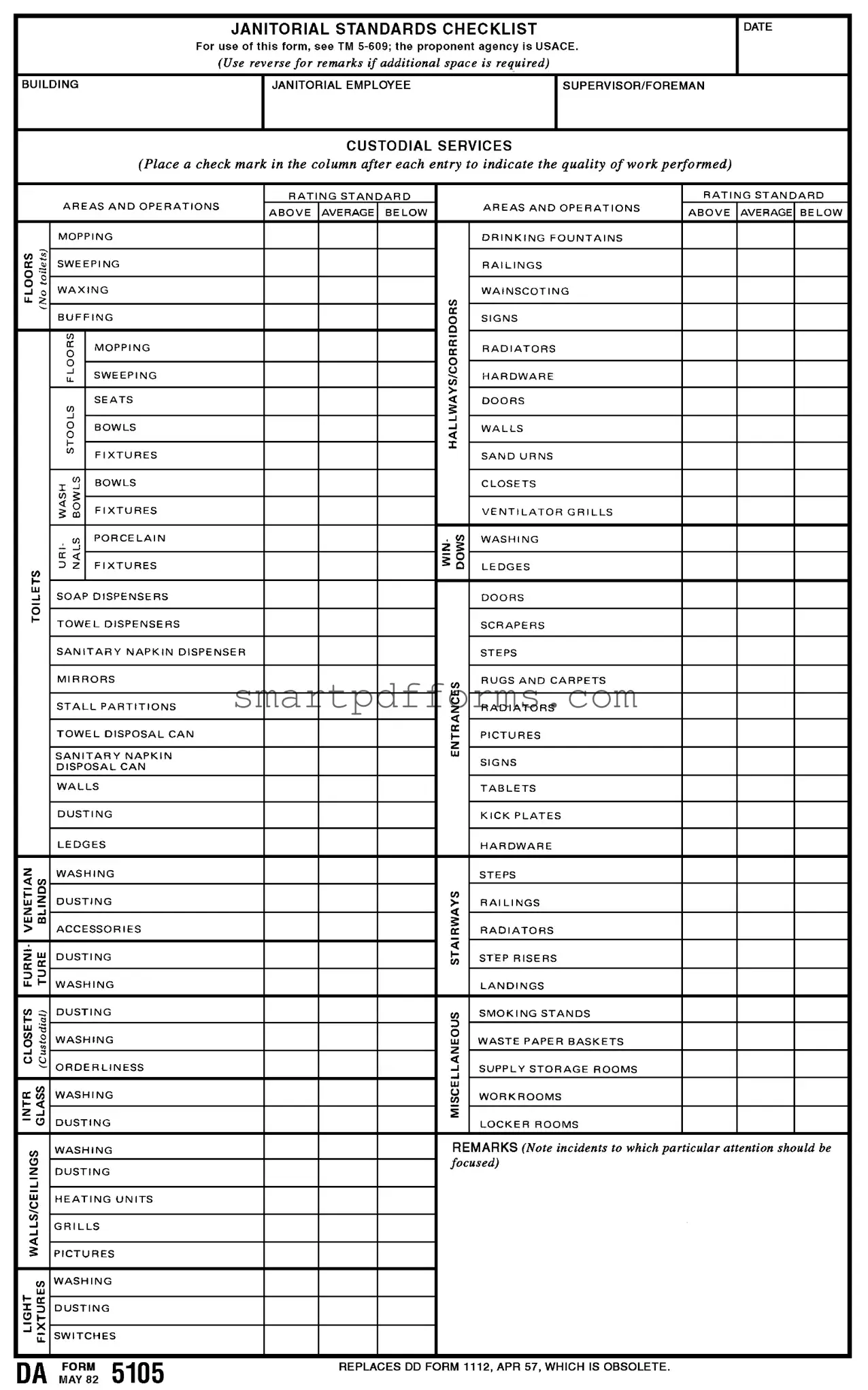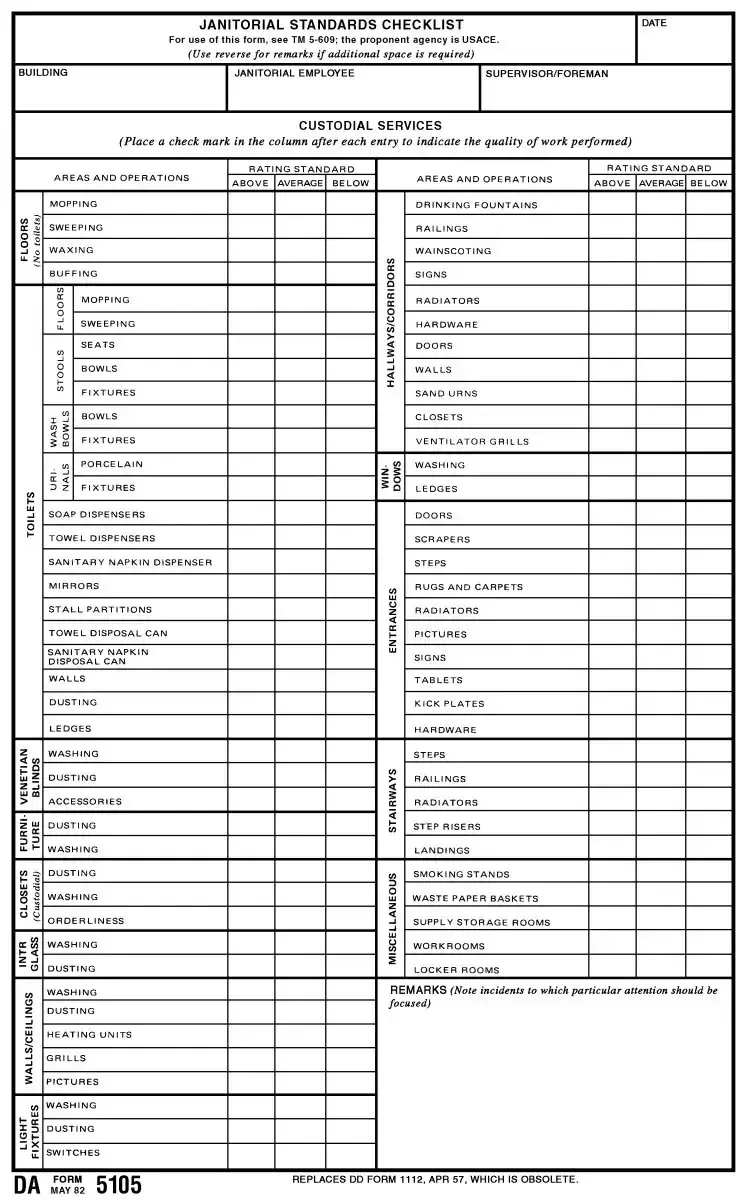Blank Janitorial Checklist PDF Template
A Janitorial Checklist form is a tool designed to ensure the daily maintenance tasks of cleaning and upkeep in a building are completed thoroughly. It lists areas and operations like mopping, sweeping, dusting, and sanitizing, allowing janitorial staff to mark off tasks as they go. This systematic approach helps maintain high standards of cleanliness and organization. To make sure your space is up to par, fill out the Janitorial Checklist by clicking the button below.
Make This Document Now

